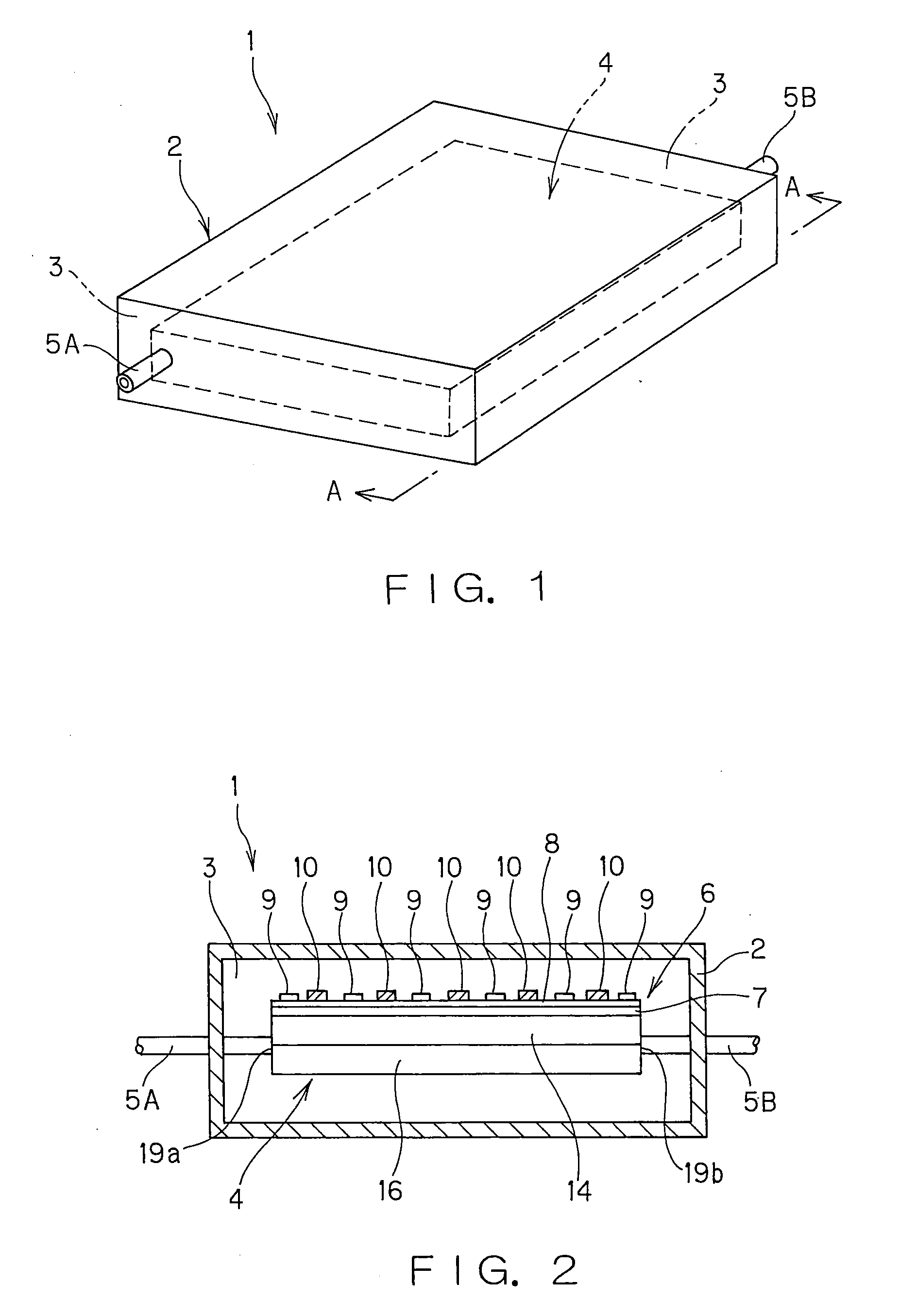Microreactor
- Summary
- Abstract
- Description
- Claims
- Application Information
AI Technical Summary
Benefits of technology
Problems solved by technology
Method used
Image
Examples
example 1
[0083]A 1-mm thick SUS316L substrate (25 mm×25 mm) was readied up for a metal substrate, and a photosensitive resist material (OFPR made by Tokyo Ohka Kogyo Co., Ltd.) was coated on each surface of SUS316L by dipping (at a post-drying thickness of 7 μm). Then, a photomask configured such that striped light block portions of 1,500 μm in width extending alternately 20 mm from the left and right sides at a pitch of 2,000 μm was located on the resist coating of the SUS316L substrate on the side to be provided with fine grooves. Besides, a photoresist material was likewise coated on a similar SUS316L substrate as mentioned above, followed by the location of a photomask on the resist coating of the SUS316L substrate on the side to be provided with fine grooves. This photo-mask was of plane symmetry about the first-mentioned photomask with respect to the SUS316L substrate plane.
[0084]Then, the resist coatings of the aforesaid one set of SUS316L substrates were exposed to light through the ...
example 2
[0103]Four 1-mm thick SUS316L substrates (25 mm×25 mm) were readied up as metal substrates. Both surfaces of these SUS316L substrates were coated by dipping with a photosensitive resist material (OFPR made by Tokyo Ohka Kogyo Co., Ltd.) (at a post-drying thickness of 7 μm). Then, a photomask having three rows of rectangular (6 mm×20 mm) light-block portions at a pitch of 7 mm was located on the resist coating on the surface of each SUS316L substrate to be grooved, while a photomask having three 4-mm diameter circular light-block portions at a pitch of 7 mm was located on the resist coating on the opposite surface of each SUS316L substrate. Then, the resist coatings were exposed to light via the photomasks, and developed with a sodium hydrogen carbonate solution, whereby there was a resist pattern formed, in which rectangular openings (of 6 mm×20 mm) were lined up on one surface of each USU316L substrate at a pitch of 7 mm in three rows, three 4-mm diameter circular openings were lin...
PUM
| Property | Measurement | Unit |
|---|---|---|
| Current | aaaaa | aaaaa |
| Digital information | aaaaa | aaaaa |
| Electric properties | aaaaa | aaaaa |
Abstract
Description
Claims
Application Information
 Login to View More
Login to View More - R&D
- Intellectual Property
- Life Sciences
- Materials
- Tech Scout
- Unparalleled Data Quality
- Higher Quality Content
- 60% Fewer Hallucinations
Browse by: Latest US Patents, China's latest patents, Technical Efficacy Thesaurus, Application Domain, Technology Topic, Popular Technical Reports.
© 2025 PatSnap. All rights reserved.Legal|Privacy policy|Modern Slavery Act Transparency Statement|Sitemap|About US| Contact US: help@patsnap.com



